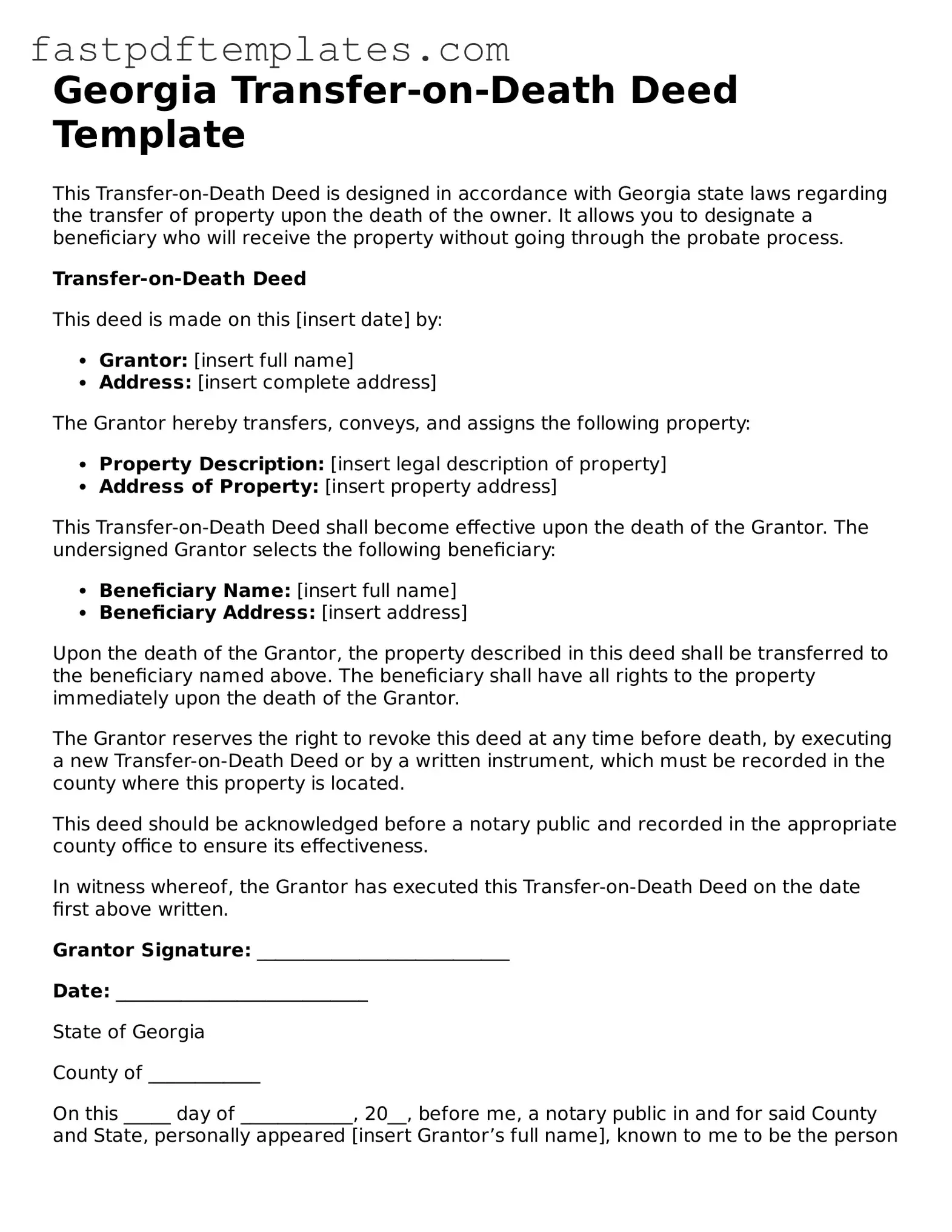Georgia Transfer-on-Death Deed Template
This Transfer-on-Death Deed is designed in accordance with Georgia state laws regarding the transfer of property upon the death of the owner. It allows you to designate a beneficiary who will receive the property without going through the probate process.
Transfer-on-Death Deed
This deed is made on this [insert date] by:
- Grantor: [insert full name]
- Address: [insert complete address]
The Grantor hereby transfers, conveys, and assigns the following property:
- Property Description: [insert legal description of property]
- Address of Property: [insert property address]
This Transfer-on-Death Deed shall become effective upon the death of the Grantor. The undersigned Grantor selects the following beneficiary:
- Beneficiary Name: [insert full name]
- Beneficiary Address: [insert address]
Upon the death of the Grantor, the property described in this deed shall be transferred to the beneficiary named above. The beneficiary shall have all rights to the property immediately upon the death of the Grantor.
The Grantor reserves the right to revoke this deed at any time before death, by executing a new Transfer-on-Death Deed or by a written instrument, which must be recorded in the county where this property is located.
This deed should be acknowledged before a notary public and recorded in the appropriate county office to ensure its effectiveness.
In witness whereof, the Grantor has executed this Transfer-on-Death Deed on the date first above written.
Grantor Signature: ___________________________
Date: ___________________________
State of Georgia
County of ____________
On this _____ day of ____________, 20__, before me, a notary public in and for said County and State, personally appeared [insert Grantor’s full name], known to me to be the person whose name is subscribed to the foregoing instrument, and acknowledged that he/she executed the same for the purposes therein contained.
Notary Public Signature: ___________________________
My Commission Expires: ___________________________
